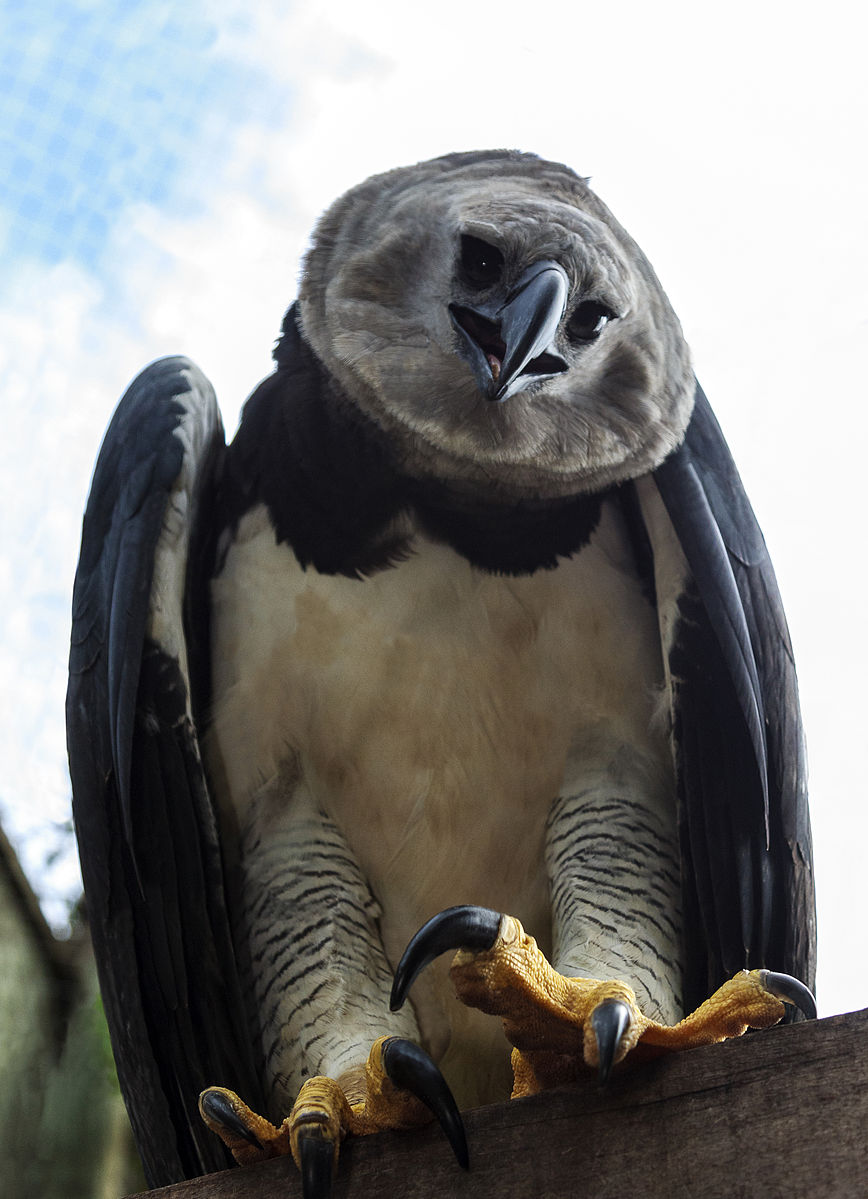Harpy Eagles, the largest and most powerful raptors in the Americas, typically begin to fly around five or six months of age. At this stage, their first flights might be shaky and awkward, but they quickly improve, becoming almost as skilled as their parents in just a few days.
The Fledgling Stage: When Harpy Eagles Take Their First Flights
The young Harpy Eagle remains dependent on its parents for the first one to two years of life, and when it is hunting well enough on its own, it will disperse to find a territory of its own. During the fledgling stage, the eaglet’s first flights are often unsteady and clumsy, but they quickly gain confidence and skill.
Factors Influencing the Fledgling’s First Flights
Several factors can influence the timing and success of a Harpy Eagle’s first flights:
- Age: Harpy Eagles typically take their first flights around 5-6 months of age.
- Parental Guidance: The parents play a crucial role in teaching the young eagle hunting and flying techniques, providing support and protection during the early flights.
- Physical Development: As the eaglet’s muscles and coordination develop, their flight skills improve rapidly.
- Environmental Conditions: Favorable weather conditions, such as calm winds and clear skies, can make the first flights easier and more successful.
The Hunting Prowess of Harpy Eagles
 Image source: Águia Harpia – Harpy Eagle by Jonathan Wilkins
Image source: Águia Harpia – Harpy Eagle by Jonathan Wilkins
Harpy Eagles have a varied diet, including tree-dwelling mammals such as sloths and monkeys, as well as porcupines, squirrels, opossums, anteaters, armadillos, and even kinkajous, coatis, and tayras. They may also attack parrots and other birds, and their diet can also include reptiles such as iguanas, tegus, and snakes.
Hunting Techniques of Harpy Eagles
Harpy Eagles are known for their exceptional hunting skills, which they hone during the first few years of their lives. Some of their hunting techniques include:
- Stealth Approach: Harpy Eagles can fly relatively slowly and quietly, allowing them to move stealthily through the dense forest canopy.
- Powerful Talons: Their massive, powerful talons are capable of crushing the bones of their prey, making them formidable hunters.
- Keen Eyesight: Harpy Eagles have excellent eyesight, which helps them spot their prey from a distance.
Harpy Eagle Breeding and Parental Care
Harpy Eagles are monogamous, and their pair bonds last for life. Both parents share incubation and chick-rearing duties, with the male capturing much of the food for the incubating female and later the eaglet.
Nesting and Incubation
Harpy Eagles breed every 2 to 3 years, and the female lays 2 white eggs, incubating them for around 56 days. The male takes an incubating shift while the female forages and brings prey back to the nest.
Parental Care and Eaglet Development
The young Harpy Eagle remains dependent on its parents for the first one to two years of life, during which time the parents teach the eaglet hunting and flying techniques. When the eaglet is hunting well enough on its own, it will disperse to find a territory of its own.
Threats to Harpy Eagles
Harpy Eagles are threatened primarily by habitat loss due to the expansion of logging, cattle ranching, agriculture, and prospecting. They are also threatened by hunting, as their large size and nearly fearless behavior around humans reportedly make them an “irresistible target” for hunters.
Conservation Efforts
Despite these threats, the total Harpy eagle population size is estimated to be around 20,000-49,999 individuals. Conservation efforts, such as habitat protection and anti-poaching measures, are crucial to ensuring the long-term survival of this majestic species.
Conclusion
Harpy Eagles, the largest and most powerful raptors in the Americas, are a fascinating and awe-inspiring species. Their first flights, typically around 5-6 months of age, mark the beginning of their journey to becoming skilled hunters and successful breeders. Understanding the factors that influence their development and the threats they face is crucial for their conservation and protection.
References:
– https://abcbirds.org/bird/harpy-eagle/
– https://peregrinefund.org/explore-raptors-species/eagles/harpy-eagle
– https://animalia.bio/harpy-eagle



